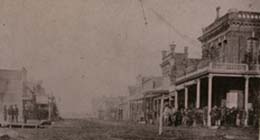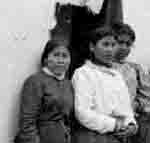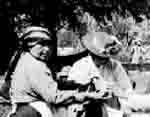
Victoria's Secret:
1859-1866
| The Dance Floor |
| Sexual History |
| Nightly Entertainment |
| Stakeholders |
| Local Halls |
| Original Sources |
| Citations |
| About Us |
| Native Women |
|
Native women did not see their use of their bodies as anything unrespectable or immoral. In fact, it seems likely that they saw it as the complete opposite. Evidence suggests that many of the women who worked as what the Europeans called prostitutes saw their actions not as indecent but as a legitimate way to earn the things that they wanted to bring back to distribute among their tribes—“blankets, trinkets, tobacco, whiskey, and other presents.”* It has even been suggested that “within their own societies there was little censure of Native women who engaged in sexual activity for payment.”* With specific regard to dance halls, Native women apparently saw them as a place to earn income but also where they could learn how to dress and behave as "respectable" European women. The Aboriginal women made for themselves dresses that emulated the clothing of the fashionable European women of the day (for more information on the clothing, see here). Because the lives and cultures of these women had been so disrupted by the arrival of the Europeans, the women sought ways to understand and be accepted by the new society that had rapidly arisen and taken over; “faced with a disruption of traditional ways of everyday life, they saw the dance halls as a means, not only to make a bit of money, but also to learn how to dress and behave as their newcomer counterparts did and thereby, they hoped, to secure a measure of acceptance and even respectability.”* Because they were the main employees of the dance houses, Native women were able to assert themselves as respectable within the dance houses. This appears to have been done mainly through their style of dress, the style of dance, and their insistence upon acting as a “respectable” woman: they often refused to dance with a man until she had been formally introduced to him. It is clear that “Aboriginal women sought to behave in a manner consistent with the clothing they could now afford.”*
|


